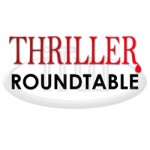

March 4 – 10: “Which do you prefer to write, the protagonist or the antagonist, and why?”
 This week: “Protagonists? Antagonists? Which do you prefer to write, and why?” Join ITW Members Mick Sims, Shannon Baker, Phillip Donlay, Jess Faraday, Erin Hart and Anne Petty and they discuss the advantages and disadvantages of both!
This week: “Protagonists? Antagonists? Which do you prefer to write, and why?” Join ITW Members Mick Sims, Shannon Baker, Phillip Donlay, Jess Faraday, Erin Hart and Anne Petty and they discuss the advantages and disadvantages of both!
~~~~~
 Anne C. Petty is the author of horror/dark-fantasy novels The Cornerstone, Thin Line Between, Shaman’s Blood; a Florida Gothic suspense series co-written with P.V. LeForge, three books of literary criticism, and many essays on the craft of writing. Recent short fiction includes her award-winning story “Blade”; a novella “The Veritas Experience” published in The Best Horror, Fantasy & Science Fiction of 2009; and “The Real Deal,” included in the anthology Slices of Flesh from Dark Moon Books.
Anne C. Petty is the author of horror/dark-fantasy novels The Cornerstone, Thin Line Between, Shaman’s Blood; a Florida Gothic suspense series co-written with P.V. LeForge, three books of literary criticism, and many essays on the craft of writing. Recent short fiction includes her award-winning story “Blade”; a novella “The Veritas Experience” published in The Best Horror, Fantasy & Science Fiction of 2009; and “The Real Deal,” included in the anthology Slices of Flesh from Dark Moon Books.
 Erin Hart’s archaeological crime novels are set in the mysterious Irish bogs. HAUNTED GROUND (2003), was shortlisted for Anthony and Agatha awards; LAKE OF SORROWS (2004) was a Minnesota Book Award finalist; FALSE MERMAID (2010) made ALA/Booklist’s Top Ten Crime Novels of 2010. THE BOOK OF KILLOWEN will be published in March 2013.
Erin Hart’s archaeological crime novels are set in the mysterious Irish bogs. HAUNTED GROUND (2003), was shortlisted for Anthony and Agatha awards; LAKE OF SORROWS (2004) was a Minnesota Book Award finalist; FALSE MERMAID (2010) made ALA/Booklist’s Top Ten Crime Novels of 2010. THE BOOK OF KILLOWEN will be published in March 2013.
 Len Maynard & Mick Sims, Maynard Sims, are authors of six novels, four novellas eight collections. DARK OF THE SUN is their first non-supernatural thriller, but not their last. It has its own website. It features a hero who is quite happy with his lot in life in the Bahamas. Then people start getting killed, and his life is turned upside down and he is dragged into an underworld of intrigue and danger.
Len Maynard & Mick Sims, Maynard Sims, are authors of six novels, four novellas eight collections. DARK OF THE SUN is their first non-supernatural thriller, but not their last. It has its own website. It features a hero who is quite happy with his lot in life in the Bahamas. Then people start getting killed, and his life is turned upside down and he is dragged into an underworld of intrigue and danger.
 A lover of mountains, plains, oceans and rivers, Shannon Baker can often be found traipsing around the great outdoors. She is a member of ITW, MWA, SinC and Rocky Mountain Fiction Writers and makes her home in Boulder, CO. TAINTED MOUNTAIN, the first in her Nora Abbott Mystery Series, is set in Flagstaff, AZ, where she lived for several years and worked for The Grand Canyon Trust, a hotbed of environmentalists who, usually, don’t resort to murder.
A lover of mountains, plains, oceans and rivers, Shannon Baker can often be found traipsing around the great outdoors. She is a member of ITW, MWA, SinC and Rocky Mountain Fiction Writers and makes her home in Boulder, CO. TAINTED MOUNTAIN, the first in her Nora Abbott Mystery Series, is set in Flagstaff, AZ, where she lived for several years and worked for The Grand Canyon Trust, a hotbed of environmentalists who, usually, don’t resort to murder.
 Philip Donlay has been a flight instructor, flown a private jet for a Saudi prince, and for twenty-eight years flew a corporate jet for a Fortune 500 company. His travels have taken him to over forty countries on five continents. He currently divides his time between Minneapolis and the Pacific Northwest. He is the author of three novels: CATEGORY FIVE, CODE BLACK, and ZERO SEPARATION.
Philip Donlay has been a flight instructor, flown a private jet for a Saudi prince, and for twenty-eight years flew a corporate jet for a Fortune 500 company. His travels have taken him to over forty countries on five continents. He currently divides his time between Minneapolis and the Pacific Northwest. He is the author of three novels: CATEGORY FIVE, CODE BLACK, and ZERO SEPARATION.
 Jess Faraday is the author of the Lambda-shortlisted novel of historical suspense, THE AFFAIR OF THE PORCELAIN DOG. She is also the mystery editor for Elm Books. She lives and writes in the Western United States.
Jess Faraday is the author of the Lambda-shortlisted novel of historical suspense, THE AFFAIR OF THE PORCELAIN DOG. She is also the mystery editor for Elm Books. She lives and writes in the Western United States.
- LAST GIRL MISSING with K.L. Murphy - July 25, 2024
- CHILD OF DUST with Yigal Zur - July 25, 2024
- THE RAVENWOOD CONSPIRACY with Michael Siverling - July 19, 2024
